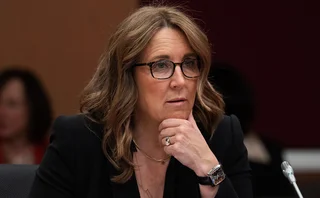
Time to keep a cool head

Recent events have been breathtaking in both the range of operational risks they've highlighted and the uncertainties those losses have created as knock-on effects.
Rogue trading, faulty models, internal control loopholes, market abuse, poor new product evaluations ... The lessons that can be learned from the contortions the financial industry has gone through over the past few months are many.
But it is how we learn these lessons that is so very important. Sarbanes-Oxley (and indeed the Glass-Steagall Act that came out of the 1930s banking crisis before it) shows the danger that lurks in knee-jerk legislation. One can't blame legislators - their constituents are on their backs to do something. The regulators are in the same boat - they too will be under pressure to produce change, irregardless of the form it takes.
The process that created Basel II, however, is a model of how regulators, legislators and the financial services industry can work together. Except in the US, these three parties communicated with each other at a level not seen before. This dialogue must continue - it must be enhanced - if we are to have any hope of improving the framework the financial services industry operates within after this crisis.
Former Federal Reserve chairman Alan Greenspan, and others, have called for Basel II to be rewritten. This might be the best way to tackle the issues that arise from this global credit crisis - and its spin-off mini-events. A global, co-ordinated response is required. Cool heads must prevail.
Greenspan, and others, have also remarked on the fact that our current crop of risk models seem to not work when negative correlations disappear in times of financial market stress. He suggests in a recent article that the problem might be resolved by modelling each phase of the economic cycle separately for credit and market risk. I wonder if this logic should be applied to operational risk loss analysis as well - that instead of focusing on modelling losses over a long period of time, there might be knowledge gained from modelling types of events (for example, rogue trading or market abuse) against specific key risk indicators or broader market conditions.
Greenspan also says that behavioural responses to market conditions should be taken into account in credit and market risk models. Again, I ask what the experiences of the operational risk discipline could bring to this, and what can be incorporated back into improving operational risk modelling.
Have a good month!
Only users who have a paid subscription or are part of a corporate subscription are able to print or copy content.
To access these options, along with all other subscription benefits, please contact info@risk.net or view our subscription options here: http://subscriptions.risk.net/subscribe
You are currently unable to print this content. Please contact info@risk.net to find out more.
You are currently unable to copy this content. Please contact info@risk.net to find out more.
Copyright Infopro Digital Limited. All rights reserved.
As outlined in our terms and conditions, https://www.infopro-digital.com/terms-and-conditions/subscriptions/ (point 2.4), printing is limited to a single copy.
If you would like to purchase additional rights please email info@risk.net
Copyright Infopro Digital Limited. All rights reserved.
You may share this content using our article tools. As outlined in our terms and conditions, https://www.infopro-digital.com/terms-and-conditions/subscriptions/ (clause 2.4), an Authorised User may only make one copy of the materials for their own personal use. You must also comply with the restrictions in clause 2.5.
If you would like to purchase additional rights please email info@risk.net
More on Risk management
BoE warns over risk of system-wide cyber attack
Senior policy official Carolyn Wilkins also expresses concern over global fragmentation of bank regulation
Treasury clearing timeline ‘too aggressive’ says BofA rates head
Sifma gears up for extension talks with incoming SEC and Treasury officials
Strengthening technology resilience and risk controls against multidomain disruption
The consequences of multidomain disruption and best practice strategies to enhance digital resilience
Op risk data: Mastercard schooled in £200m class action
Also: Mitsubishi copper crunch, TD tops 2024 op risk loss table. Data by ORX News
Diversification of LDI liquidity buffers sparks debate
Funds using credit assets to top up collateral waterfall, but some risk managers are sceptical
Transforming stress-testing with AI
Firms can update their stress-testing capability by harnessing automated scenario generation, says fintech advocate
Basel stops short on wrong-way risk
New guidelines a step in right direction, but experts warn they won’t prevent another Archegos
On resilience risk, banks prepare to let the bad times roll
Lenders bolster first-line teams and upskill boards as compliance with new rules bites







